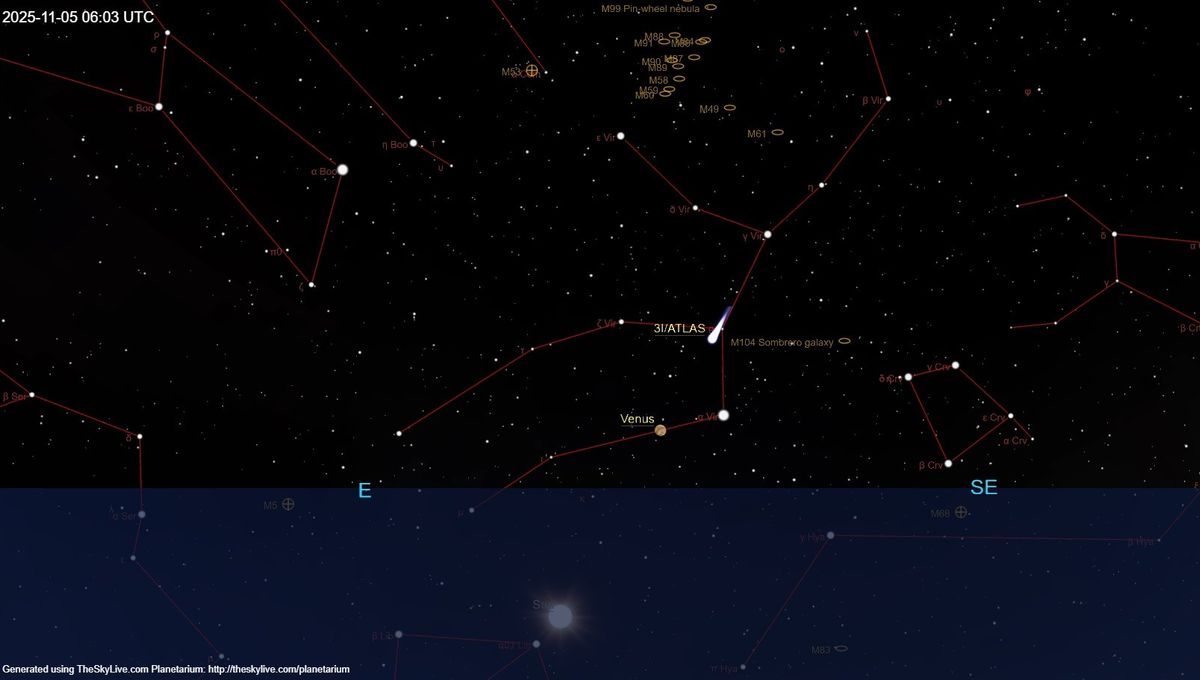
Two weeks ago, interstellar comet 3I/ATLAS was at conjunction, on the opposite side of the Sun with respect to Earth. Last week, it reached perihelion, the closest point it would ever get to the Sun. Now it is back from behind the Sun and we can see it again. In fact, Earth is moving towards it as the comet moves away from the Sun, so the next several weeks are a great time to study it. And everyone can get involved.
The rest of this article is behind a paywall. Please sign in or subscribe to access the full content.
The comet will be visible for anyone with a telescope or very good binoculars in the hours before dawn. The telescope doesn’t need to be anything extravagant to catch this object, but don’t expect to see a spectacle like Hale-Bopp, the Great Comet of 1997. Still, this is a chance to see an object that formed 10 billion years ago, somewhere beyond our Solar System.
How to find Comet 3I/ATLAS in the sky
“November will be the ideal month to observe Comet 3I/ATLAS, a rare interstellar visitor that will shine near Venus and the bright star Spica in Virgo. Around November 3, the comet will rise about two hours before sunrise. Its brightness may reach magnitude 10 — faint but visible through a telescope or good binoculars,” Dr Franck Marchis, senior astronomer and Director of Citizen Science at the SETI Institute and Chief Science Officer and co-founder of Unistellar, told IFLScience last week.
“To find it, start with Venus or Spica as guides. If you’re unsure where to look, use a stargazing app (like SkySafari, Stellarium, or Sky Tonight) or a stellar map. Comets are unpredictable, so their brightness may change after perihelion — meaning this might be your best chance to catch it!”
Dr Marchis’ predictions for the comet’s magnitude seem on the money based on the latest observations. Even though 3I/ATLAS got no closer than 203 million kilometers (126 million miles) from the Sun, its activity ramped up spectacularly. This makes an easier and more exciting target. The comet has already been snapped by amateurs, but now it will be even easier to do.
The comet is still very low on the horizon, so many professional observatories can’t spot it; this is an opportunity for amateur astronomers to not only snap their photos but also produce some science.
“Working with SETI Institute scientists, Unistellar’s global network of 25,000 citizen astronomers will capture real-time data to help researchers study the composition and trajectory of this visitor from beyond our Solar System. Participants will be able to share their observations through the Unistellar app and contribute to ongoing research at the SETI Institute,” Marchis explained.
If the weather forecast is not great, worry not. The Virtual Telescope Project is planning to stream observations of the comet in a couple of weeks.
Source Link: Interstellar Comet 3I/ATLAS Can Now Be Seen From Earth – Even By Amateur Telescopes!